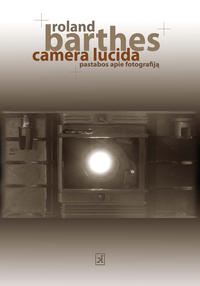

He became overcome with a powerful “ontological desire” to discover the essential feature of photography, to discover what distinguishes a photograph from all other images and whether photography existed at all.Ĭamera Lucida is a quixotic work.

Although this insight filled him with amazement, he believed that no one else would find it remarkable. īarthes opens Camera Lucida with the realization that, “ one day quite some time ago”, when he happened upon a photograph of Napoleon’s younger brother taken in 1852, he was looking at the very eyes that looked at Napoleon. I was overcome by an “ontological” desire: I want e d to learn at all costs wh a t Photography was “in itself,” by what essential feature it was to be distinguished from the community of images. A pure idea that exists independently of the mind. That which is seen: form, image or shape. Eidos: an ancient Greek word that means form or essence.


 0 kommentar(er)
0 kommentar(er)
